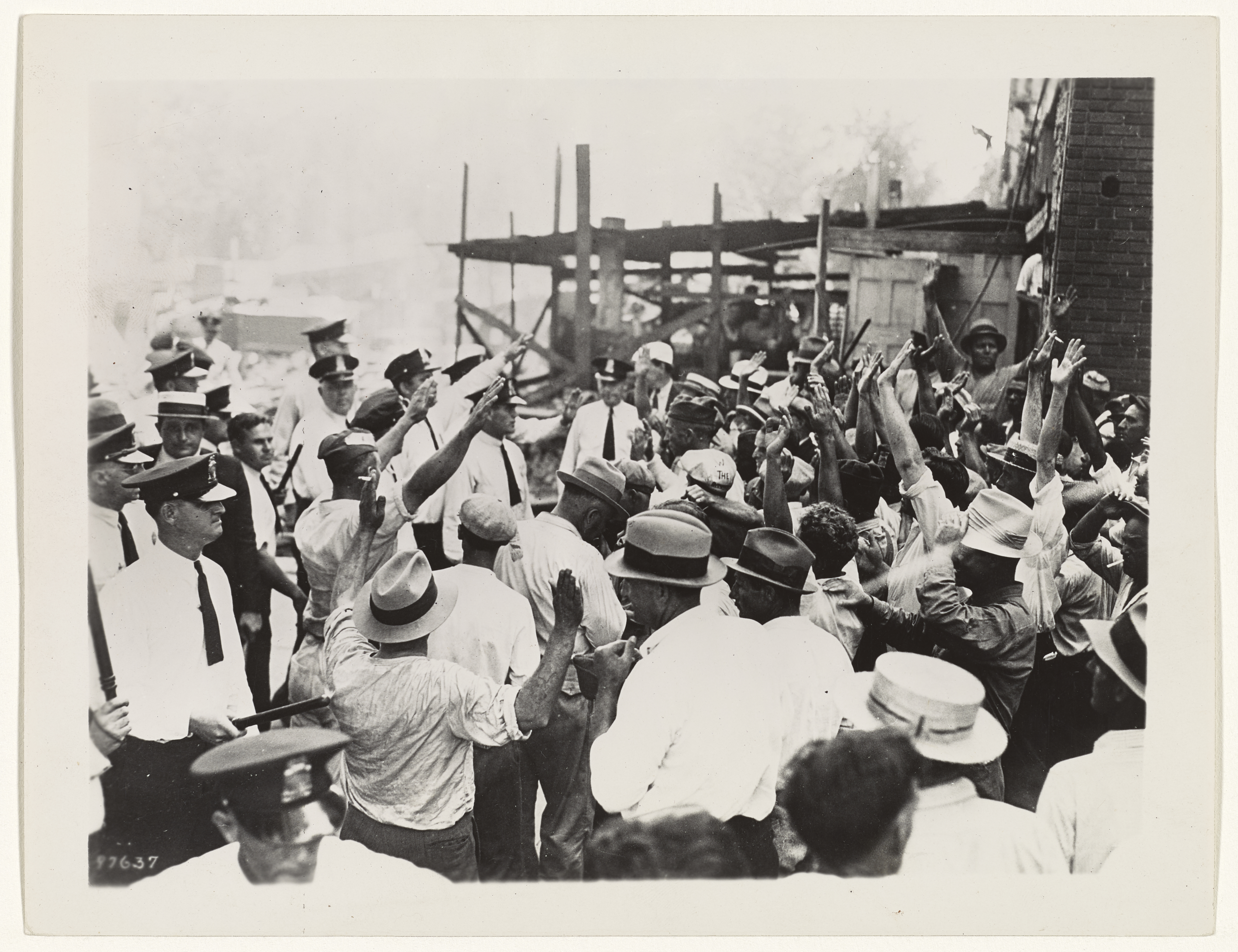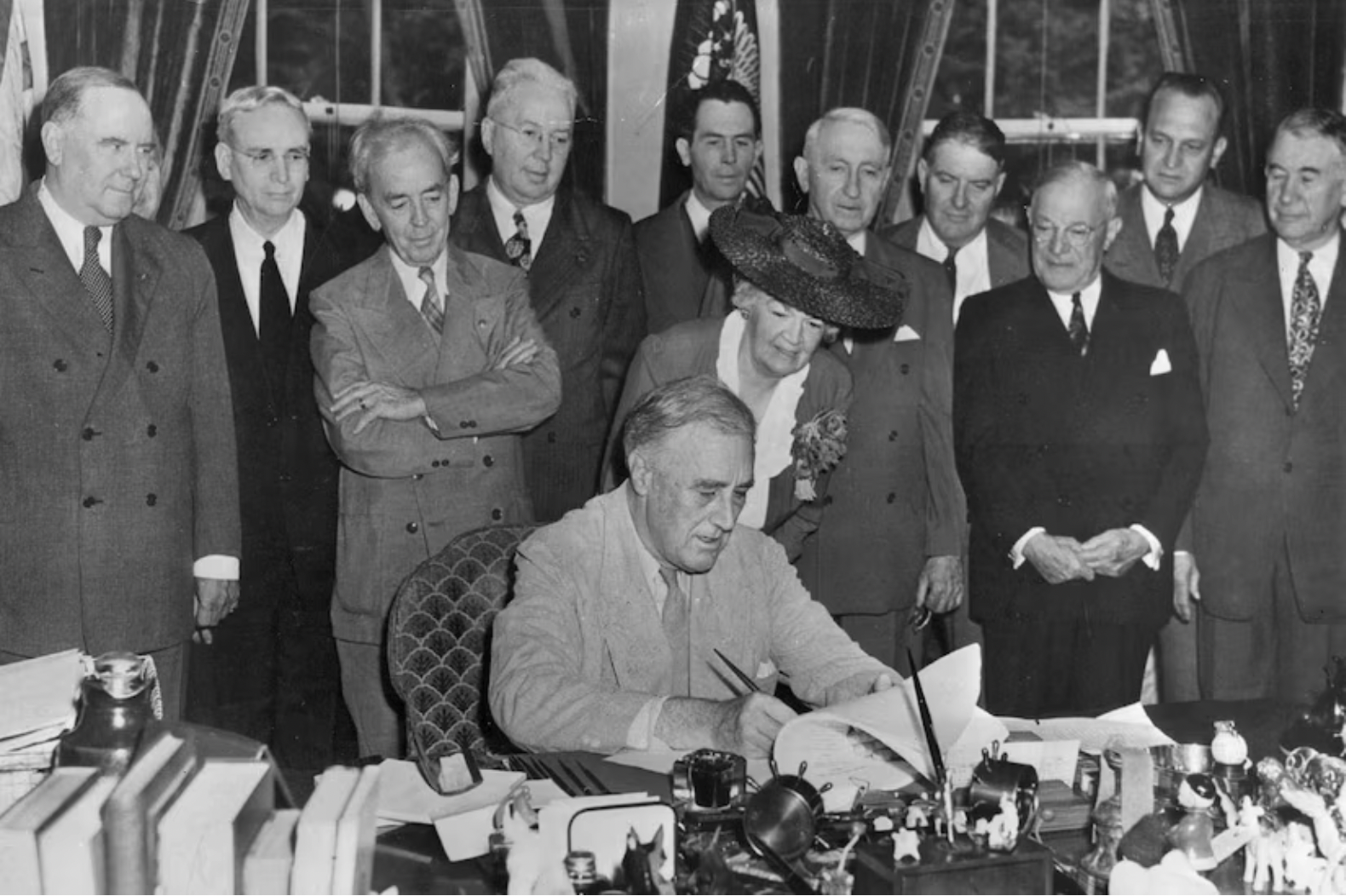Veterans Day 2025: The Pattern We Need to Recognize
On Veterans Day, we honor those who stood ready at the gate. Who kissed their families goodbye and took their place in defense of this country. Who served in combat and who served standing watch, all of them part of the force that kept us safe.
But there’s another American tradition that runs alongside the parades and proclamations. Every decade or so, when the bill comes due for veterans’ care and compensation, someone steps forward to ask: Do they really deserve it?
This isn’t new. This is the pattern.
Summer 1932: The Bonus Army
They were World War I veterans, promised bonuses for their service. When the Depression hit, they marched on Washington to ask for what they’d been promised early. They set up camps. They brought their families. They asked Congress to keep its word.

Bonus Army encampment, Washington D.C., 1932. WWI veterans and their families camped in the capital asking Congress to honor promised bonuses. On July 28, the U.S. Army attacked with tear gas and cavalry, then burned the camps. National Archives.
On July 28, 1932, the U.S. Army – led by Douglas MacArthur and George Patton – attacked American veterans with tear gas, bayonets, and cavalry charges. They burned the veterans’ camps. President Hoover had decided these veterans didn’t deserve what they’d been promised. They were called agitators. Complainers. People trying to live off the government.
They were veterans who had served their country, asking for what they’d been promised.
The 1970s: VA Hospitals as Horror Stories
By 1970, the Veterans Administration hospital system had become a national scandal. LIFE Magazine called it a “medical slum.” Senator Alan Cranston’s investigation exposed deplorable conditions, patient abuse, and systematic neglect at facilities across the country.

From Time Magazine’s 1970 coverage of the VA hospital crisis: “The VA hospital system… the biggest in the world… is disgracefully understaffed, with standards far below those of an average community hospital.” One nurse ministered to 80 patients at a time. Doctors in Los Angeles described conditions as “medieval” and “filthy.”
The scandal led to reforms. But it also reinforced a narrative: that veterans’ care was a burden, a failing system, money thrown at an unsolvable problem. The veterans themselves became associated with the failure, rather than recognized as victims of political neglect.
The Combat Veteran vs. Everyone Else
There’s an old argument that surfaces every generation: combat veterans deserve compensation, but the rest – the ones who served standing ready, who maintained the aircraft, who processed the intelligence, who kept the supply lines running, who stood watch at bases around the world – they don’t really deserve anything.
It’s a wedge designed to divide us. To make us question each other’s service instead of questioning why the promise keeps getting broken.
Every veteran who served took the same oath. Every veteran who served put their life on hold, left their families, and said yes when their country called. The person who flew the combat mission and the person who maintained that aircraft so it could fly safely – both served. Both sacrificed. Both deserve what they were promised.
Agent Orange, Gulf War Illness, TBI: Decades of Denial
When Vietnam veterans came home sick from Agent Orange exposure, the VA fought their claims for decades. “Not service-connected.” It took until the 1990s to establish presumptive conditions.
When Gulf War veterans reported mysterious illnesses, they were told it was stress. “It’s not real.” The denial lasted years.
When Iraq and Afghanistan veterans started claiming traumatic brain injuries and PTSD, there was immediate skepticism about “invisible wounds.” The VA didn’t update TBI criteria until 2008, years into the wars.
In 2022 – just three years ago – 25 Republican senators suddenly flipped their votes against the PACT Act, which would cover burn pit exposure. Senator Ted Cruz said veterans were using their illnesses to get “government handouts.”
The pattern: Question whether veterans are telling the truth. Delay recognition of service-connected conditions. Make them fight for decades to prove what they already know.
Turning Generations Against Each Other
Every era tries to pit one generation of veterans against another:
- World War II veterans were celebrated as the “Greatest Generation” while Korean War veterans came home to a country that had already moved on. No victory parades. Minimal recognition. The war was called a “police action” instead of a war. The memorial wasn’t built until 1995 – 42 years after the fighting ended.
- Korean War veterans watched Vietnam veterans get called baby killers, then told they weren’t “real” veterans. The wedge was driven deeper.
- Vietnam veterans were skeptical of Gulf War illness claims – maybe because they’d spent decades fighting to get Agent Orange recognized and wondered if the new generation understood how hard the fight would be.
- Some older veterans questioned the prevalence of PTSD in younger veterans, forgetting that “shell shock” and “combat fatigue” were once dismissed the same way.
- Now Daniel Gade, an Iraq War veteran, testifies before the Senate that VA disability compensation is a “dangerous reward for victimhood” that “robs veterans of purpose.”
It’s the same strategy: Use one generation’s suffering to delegitimize the next. Use “real” combat to dismiss “lesser” service. Forget some generations entirely so we don’t have to honor what we promised them. Always question whether veterans deserve what they were promised.
What They Don’t Want You to Remember
Here’s what gets left out of these attacks: When America invested in veterans, America won.
After World War II, President Roosevelt signed the GI Bill into law. For the first time in this country’s history, young men who would have had no chance – couldn’t afford college, couldn’t afford a home, would have returned to the farm or the factory – had a different option.

President Franklin D. Roosevelt signs the GI Bill into law, June 22, 1944. The investment created the American middle class and returned $7 for every $1 spent. U.S. Department of Defense.
The results:
By 1956, 8 million veterans had used GI Bill benefits for education or training. College enrollment jumped from 1.5 million in 1940 to 2.3 million in 1947 – half were veterans. Homeownership rates skyrocketed from 44% in 1940 to 64% by the 1960s.
The GI Bill created the American middle class.
Those first-generation college students became engineers, doctors, teachers, business owners. Veterans started 49% of new businesses in the 1950s. By 1955, 4.3 million home loans worth $33 billion had been granted to veterans, who were responsible for buying 20 percent of all new homes built after the war. The suburban expansion created construction jobs, manufacturing demand, new schools. Every dollar spent on the GI Bill returned seven dollars to the economy.
This wasn’t charity. This was nation-building.
The educated, stable, economically secure veterans of the post-WWII era fueled the economic boom that made America a superpower. They broke cycles of poverty. They expanded opportunity. They proved that investing in the people who served this country isn’t a burden – it’s how you build prosperity.
As President George H.W. Bush said in 1990, “the GI Bill changed the lives of millions by replacing old roadblocks with paths of opportunity.”
October 29, 2025: The Senate Veterans Affairs Committee
Daniel Gade testified that VA disability compensation creates an “unemployment factory” and “robs veterans of purpose.” He cited his own research organization – the Independence Project, which he co-founded – as supporting evidence. He didn’t disclose that conflict of interest.
The Washington Post ran stories using a misleading “$250K statistic” that represents only 1.54% of disabled veterans, ignoring that these veterans likely have low disability ratings contributing minimal percentages to their total income.
This is the 2025 version of the pattern. Different faces, same playbook.
Question veterans’ credibility. Suggest they’re gaming the system. Use misleading statistics. Pit generations against each other. Ignore what happens when we actually invest in veterans. Focus only on cost, never on return.
What Veterans Day Should Mean
On Veterans Day, we’re supposed to remember sacrifice. The willingness to serve. The oath taken. The families left behind. The years given.
But what we actually need to remember is this: The attacks on veterans’ credibility and benefits aren’t new. They’re a feature, not a bug.
Every generation of veterans has faced a coordinated effort to question whether they really deserve what they were promised. The Bonus Army got tear-gassed. The Vietnam generation fought for decades to get Agent Orange recognized. The current generation is being told their service-connected disabilities are making them unemployable victims who need to be saved from themselves.
The question has never really been “do veterans deserve benefits?”
The question is: Do we want to repeat the success of the GI Bill, or do we want to repeat the betrayal of the Bonus Army?
Do we want to invest in the people who served and watch them build prosperity – for themselves, their families, and this nation? Or do we want to question their credibility, delay their claims, cut their benefits, and then wonder why veteran suicide rates stay high?
The pattern is clear. Recognition is how we fight back.
On this Veterans Day, remember not just the service – remember the pattern. Remember what happens when we break promises to veterans. And remember what happens when we keep them.
Tbird is the founder of HadIt.com and writes “Tbird’s Quiet Fight” on Substack, focusing on veterans’ benefits and policy analysis.

